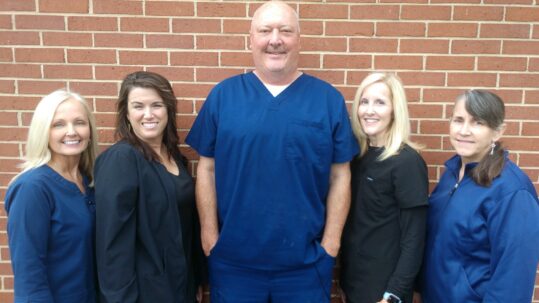
26 Mar Do NOT Try #DIYDental
It’s called the “Zoom effect.” Yet another byproduct of the Covid era, this is a legitimate phenomenon in which staring at our own faces for extended periods of time during video calls and conferences causes us to pick ourselves—including our smiles—apart. Dr. Diller is a clinical psychologist in New York City. She confirms this, saying, “When we see ourselves on video screens, face on, it tends to make us more self-conscious about how we look to ourselves and others.”
Combine the Zoom effect of post-Covid years with our hyper-media-saturated culture, the hyper-image-conscious nature of social media, and a healthy dose of natural insecurity, and what we’ve gotten in teens and young adults is a desperation to fix their appearance at seemingly any cost. Unfortunately, this has led recently to various unwise attempts, from trying to whiten one’s teeth with bleach or close the gaps in one’s teeth with rubber bands. #DIYDental has caught the world by storm. Let’s look at what it is and why you should avoid it.
What’s With This Trend?
This home-based smile improvement trend has a name: #DIYDental. The hashtag has over 3 million views on TikTok. That’s 3 million people, often impressionable youths, who are getting the idea that dental work doesn’t need to be restricted to a professional setting—why not try to remove your braces or file your teeth yourself?
As you can imagine, this trend is extremely dangerous. Fueled by a desire for airbrushed perfection and intensified by the high costs of dental work, many are causing serious and expensive damage to their mouths. Today, we hope to shed light on this phenomenon in the hopes that more people will leave the dental work to those trained to be dentists.
Why has it caught on?
In a few words: affordable, seemingly easy, and widely popular. These are the hallmarks that has made the DIY Dentistry phenomenon spread like wildfire. When an influencer tells his or her audience, the majority being young people, that they don’t need to spend money on expensive professional whitening treatments when they could just use hydrogen peroxide (a bleaching agent) instead, the impact that has is staggering. The same goes for DIY toothfiling, homemade braces, and countless other trends.
The stories it yields are not pretty. Some have used rubber “exercisers” in an attempt to get a more pronounced jawline, but all they were likely to get was pain, misaligned teeth, or a new case of temporomandibular joint disorder (TMJ). Many patients have used bleach to whiten their teeth, not knowing that it will cause them increased teeth sensitivity, irritation, and even possibly chemical burns on the soft tissue of their gums. These and countless other stories mark a movement driven by a desire to fit with standards of beauty defined by social media, as well as a need or want to circumvent the often high prices of professional dental work.
Is it worth it?
It’s true—dental work is expensive. Professional in-office whitening varies depending on what you’re receiving: it may be a few hundred dollars, or it may be $1,500. Braces typically cost at least $3,000. Dental implants cost between $4,000 and $6,000—per tooth! With these stiff prices, we can understand why many people, especially young people, and especially those without dental insurance, might turn to DIY trends to remedy problematic teeth. Cutting out the professional drastically cuts the cost.
But what if giving in to the dazzle of the DIY promise had more severe consequences than you’d expect? As it turns out, believing the false promise of DIY dentistry has left many people worse off financially than before, and with some pretty messed-up mouths.
Why Dentists Warn Against It
The answer should be somewhat obvious. Those performing so-called “DIY Dentistry” usually lack any dental training whatsoever. This lack of training yields disastrous consequences, just as in some of the stories outlined above.
Take DIY braces, for example. You would expect that dentistry as personalized and intricate as braces would obviously require a specialist. However, many are attempting to cut out the middleman.
To bypass the time, expense, and hassle of traditional braces and orthodontist involvement, they opt for clear aligners. That’s normal, you might be thinking. Thousands of people use clear aligners. That’s true, except that traditionally, the orthodontist is still involved. The orthodontist orders the clear aligners, conducts exams, and monitors their use and progress. Jessica Ann Hyppolite, RDH, explains the dangers of ordering clear aligners without the supervision and instruction of a licensed orthodontist.
“There are no x-rays taken to check for bone level and thickness, impacted teeth, resorbed roots, or retained primary teeth. There is no dental examination to check for caries, periodontal health, intraoral soft tissue lesions, or general oral hygiene. This is essential information needed to compile a treatment plan, and without it there is a significant risk for long-term damage, including jaw pain (TMD), maloclussion, and tooth loss.3 After the scan, the aligners are fabricated by the lab and mailed right to the consumer’s door step. Would an untrained customer have enough knowledge to know if the trays fit properly? Not to mention, without being monitored regularly, consumers can modify the treatment however they see fit. Some might decide to skip a few aligners in the sequence to make the treatment go faster, or wear each set for less time than indicated. This would clearly affect the success of the treatment, and by the time the consumer realized it, it would likely be too late to correct it. Despite the coolness of doing braces remotely, this is one shortcut not to take.”
RDHMag
An old but growing trend
Hyppolite was right. In fact, the problem of patients attempting to be their own orthodontist has grown so large that, as Colgate explains,
“The American Dental Association (ADA), the American Association of Orthodontists (AAO), and the Michigan Dental Association…have all issued consumer warnings against at-home braces.” Later, they add that orthodontists reported, “dire consequences of patients they saw who had attempted DIY braces. Sometimes the ‘irreparable damage’ of unsupervised care included the need for tooth extractions, bite problems, and temporary but dangerous infections.”
Colgate
Striking though it is, DIY braces are just one example! It’s clear that this trend is creating more problems than it’s solving.
It is worth noting that not all TikTok trends regarding do-it-yourself dental tricks are a disaster. Some are certainly less harmful than others, and a few, such as oil pulling, may even have some benefits. The trouble is, most teenagers and young adults who are consuming this media lack the training and awareness to discern which is which. When an influencer is encouraging them to do a certain thing or try a certain method, and the prize for doing so is alleviating some of their insecurity about the way their teeth look, the pull is often too much to resist. Consumers often simply don’t know whether a trend is relatively harmless, like brushing with hydroxyapatite toothpaste, or extremely harmful, like filing one’s teeth down with a nail file. Thus, what often results is a painful, expensive mess that requires more professional intervention than the original situation ever would have.
The Alternative to DIY Dental
The alternative to at-home dentistry is to let the trained dentists be dentists. While we sympathize with those who suffer from the pressures of a social-media-saturated, Zoom-based culture, that doesn’t mean that taking matters into your own hands is the way to go. It’s important to remember that most TikTok influencers have never been to dental school. Following their dental advice with often leave you with a costlier and more painful mess than you had before. Next time they say something is safe or good for your teeth, at least run it through a quick Google search first. Or, if you’re unsure of some dental advice you’ve been given, contact us today!

About Our Team
Our team of dental experts has well over 30 years of combined experience in the field of dentistry. To learn more about them, please visit our team page or stop by the clinic and say hello!
